Key takeaways
- Resource libraries serve as vital community hubs, providing access to knowledge, support, and opportunities for personal growth.
- Challenges in rural areas include limited infrastructure, funding shortages, and a lack of awareness about available resources.
- Developing libraries effectively involves strong partnerships, community involvement, and adaptability to meet changing needs.
- Measuring a library’s impact goes beyond usage statistics, focusing on personal stories and community growth over time.
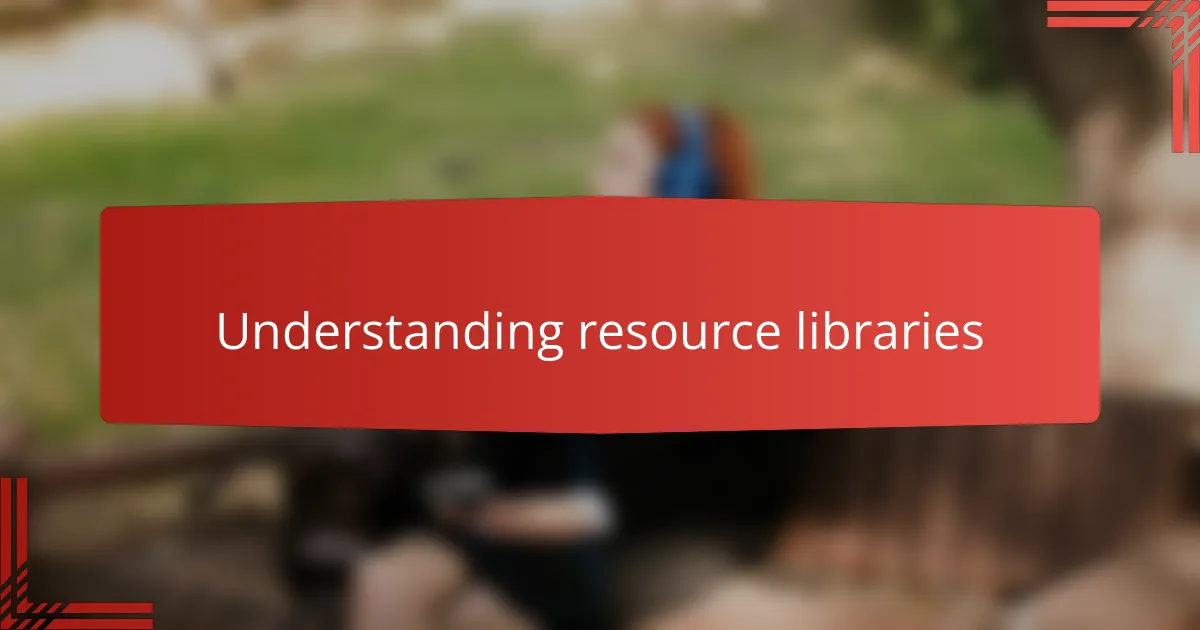
Understanding resource libraries
When I first encountered a resource library in a rural area, I realized it’s much more than just shelves of books and materials. It’s a hub where knowledge meets accessibility, tailored specifically to the unique needs of the community. Have you ever wondered how powerful it feels to have a trusted place where information and support are always within reach?
To me, a resource library is a living, breathing space that reflects the heartbeat of the community it serves. It holds tools for learning, for growth, and sometimes even for healing. I remember seeing faces light up when people discovered that help was just a visit away—it’s a subtle but profound reminder of how critical understanding the purpose of these libraries really is.
Understanding resource libraries also means recognizing their role as connectors — bridging gaps between education, health, employment, and more. They create opportunities where none seemed to exist before. How often do we stop to appreciate the quiet strength behind these community anchors? In my experience, truly grasping this changes how you support and develop such spaces.
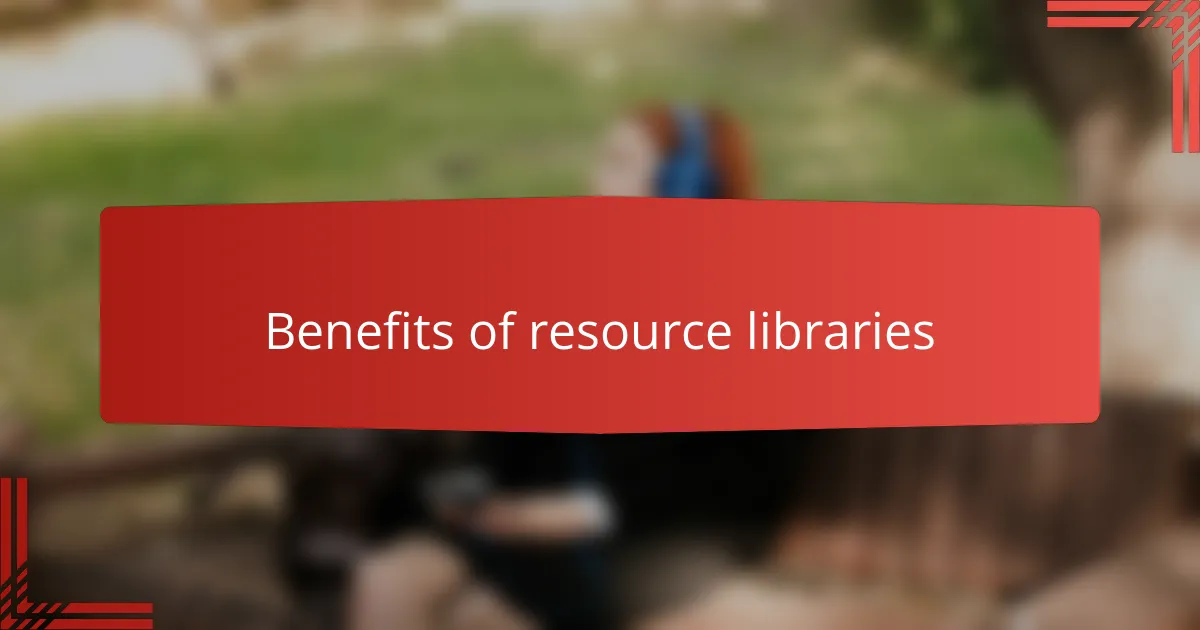
Benefits of resource libraries
One of the biggest benefits I’ve witnessed in resource libraries is their ability to empower individuals through access. When someone who’s never owned a computer learns new skills thanks to the tools available, it’s a moment of transformation that stays with me. Don’t we all deserve a chance to grow, no matter where we live?
Resource libraries also become social lifelines, especially in rural settings where isolation can be heavy. I recall a community member telling me how the library was the first place they found a sense of belonging and support during tough times. Isn’t it amazing how these spaces do more than just share information—they build real human connections?
Finally, resource libraries act as launchpads for local development by providing resources tailored to unique community needs. They offer job-training materials, health guides, and educational programs that spark hope and opportunity. When I see someone take that first step toward a new career because of these resources, it reminds me why these libraries matter so much.
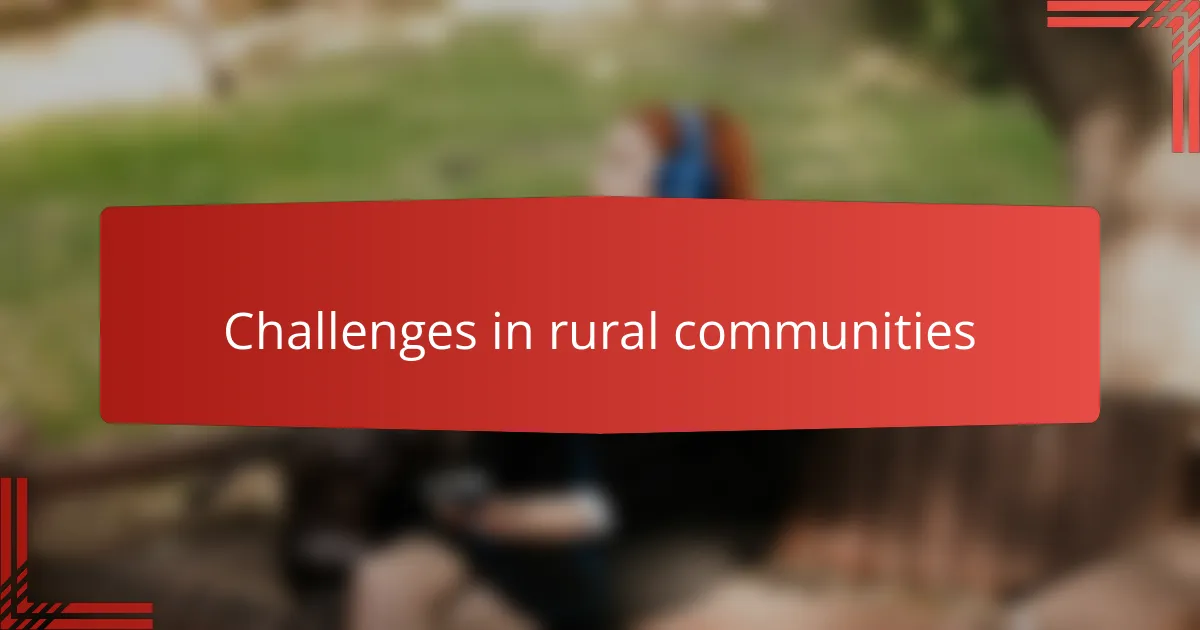
Challenges in rural communities
Rural communities often face a tough reality when it comes to infrastructure—limited internet access and transportation hurdles can make even reaching a resource library a challenge. I’ve seen firsthand how these barriers quietly hold people back from tapping into the support they need. Isn’t it frustrating that something as simple as distance can stand between someone and opportunity?
Another challenge I’ve observed is the scarcity of funding and trained staff to maintain resource libraries in rural areas. Without enough resources, these spaces risk becoming underused or outdated, which feels like a missed chance to fuel local growth. Have you ever wondered how much potential gets lost because of these gaps?
Then there’s the issue of awareness. Even when a resource library exists, not everyone knows about it or feels comfortable stepping inside. I remember chatting with a community member who said they hesitated for months before finally visiting—a hesitation rooted in unfamiliarity and fear of judgment. How can we overcome these invisible walls to make these libraries truly inviting for everyone?
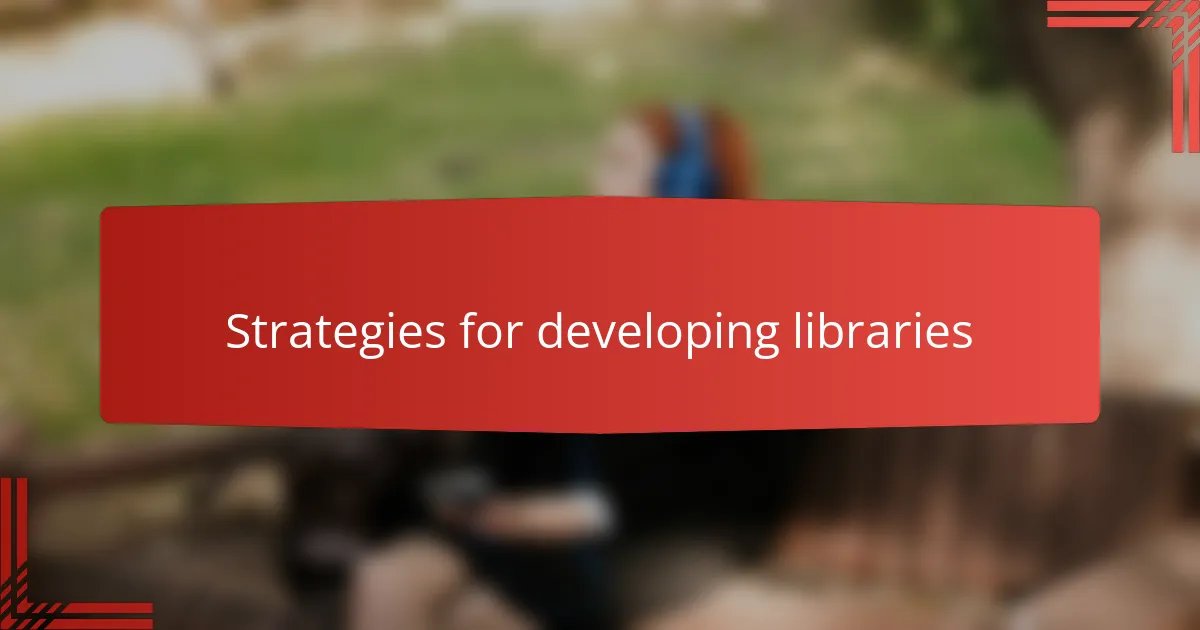
Strategies for developing libraries
When it comes to developing libraries in rural communities, I believe starting with strong partnerships is crucial. Collaborating with local schools, health centers, and community groups creates a foundation that ensures the library meets real needs. Have you noticed how working together often sparks ideas no one could have come up with alone?
Another strategy I’ve found effective is involving community members right from the beginning. When people see their voices reflected in the design and services, they’re more likely to use and care for the library. I remember a project where inviting locals to suggest what resources mattered most led to a lively sense of ownership and pride—it changed everything.
Last but not least, flexibility matters. Rural communities are diverse and shifting, so libraries must adapt continually—whether that means adding digital tools or hosting workshops that resonate with changing interests. Isn’t it exciting to think about a resource space that grows alongside its community rather than staying fixed?
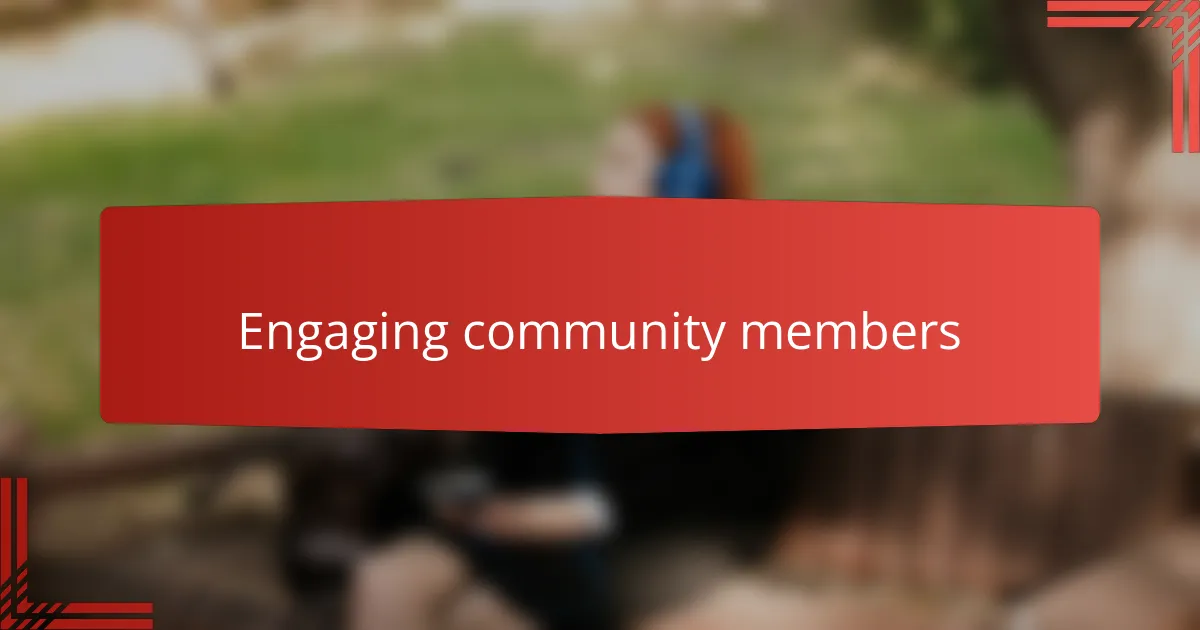
Engaging community members
Engaging community members means more than just opening doors—it requires building trust and genuine connections. I recall organizing informal meetups at a rural library where sharing stories became the first step toward deeper involvement; these moments often revealed needs and ideas that no survey ever captured. Doesn’t it feel more meaningful when people are invited to contribute, not just consume?
At times, I’ve noticed how simply recognizing local talents and skills can empower residents to become active contributors. When community members lead workshops or curate collections, the library transforms from a static resource into a vibrant, living network. Have you ever experienced the shift in energy when people take ownership in creating something together?
Finally, ongoing communication plays a vital role. Keeping channels open—whether through newsletters, social media, or casual conversations—helps sustain interest and feedback. I’ve seen libraries thrive when they stay connected with their users, adapting to changing needs and celebrating successes side by side. How often do we remember that engagement is a continuous journey, not a one-time event?
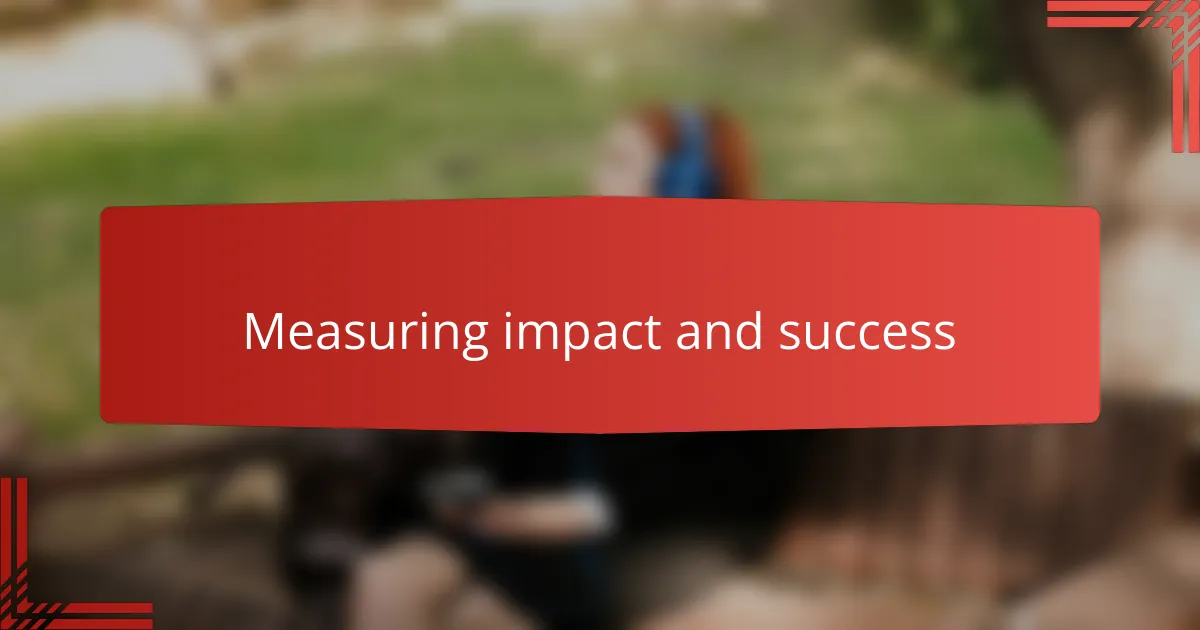
Measuring impact and success
Measuring the impact of a resource library isn’t just about counting how many books are borrowed or visits recorded; it’s about understanding the subtle changes in the community’s confidence and opportunities. I remember a rural library where tracking success meant listening closely to personal stories—like a young mom who gained computer skills that helped her land a job. Isn’t it powerful when numbers merge with real human progress?
I’ve found that success also shows itself over time through ripple effects—a single workshop can inspire others, sparking a cycle of growth that’s hard to quantify but impossible to ignore. How often do we pause to acknowledge these quiet victories that transform lives gradually but surely? From my experience, making space for these stories alongside data is key to truly measuring impact.
Lastly, setting clear, shared goals with the community helps keep the library’s progress aligned with local needs. When everyone knows what success looks like, from better school attendance to improved health awareness, it becomes easier to celebrate milestones, big or small. Have you noticed how shared purpose turns abstract measurement into meaningful celebration? That’s where I see real success taking root.